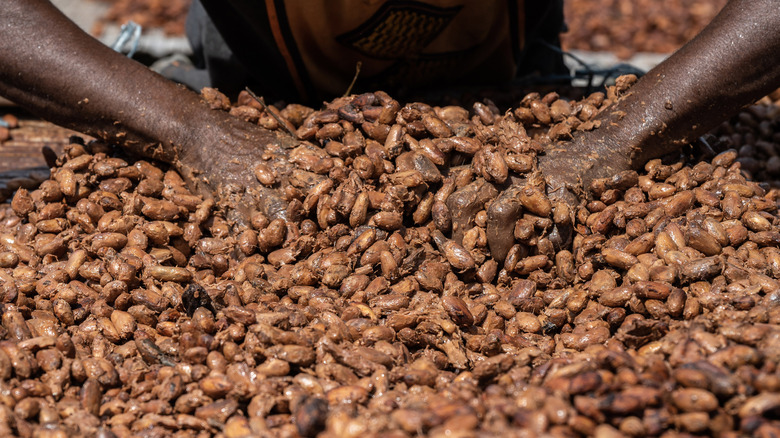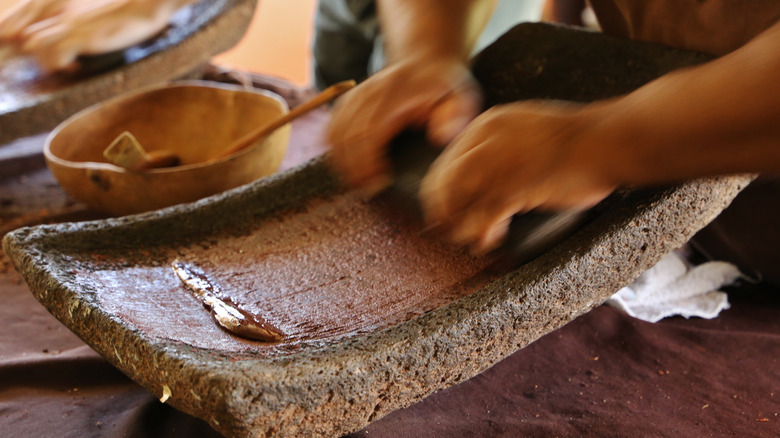The Alcoholic Cacao Drink That Predates Chocolate As We Know It
If you're fiending for a bite of chocolate, you may be thinking of a sweet bar of semi-hard candy, but that's a relatively new evolution of the use of cocoa beans. Chocolate comes from the cacao tree (Theobroma cacao, which translates as "food of the gods"), an evergreen tree native to the Amazon and Orinoco river basins. The tree produces long, colorful pods with as many as 60 seeds inside covered in a sweet, sticky pulp. When we make chocolate today, we use the seeds themselves, which are dried and roasted before being ground into a paste.
Roughly 3,000 years ago, around 1,300 B.C., Mesoamericans like the Olmecs were using a completely different part of the fruit to make a sort of chocolate wine, according to a research study published in the Proceedings of the National Academy of Sciences. The sweet pulp surrounding the cacao seeds (also known as cocoa beans) was used as the base for fermentation, reaching a maximum of 5% alcohol by volume. The Olmecs were the first major civilization in Mesoamerica, preceding both the Mayans and the Aztecs. They lived in the southern part of the Gulf of Mexico in the region of modern Veracruz and Tabasco in Mexico. What this civilization used the drink for is unclear since they didn't keep a written record of their activity, but it's speculated that it could have been used ceremonially as part of their religious rituals or, as it became later on, as a symbol of social status.
A rich history
By the time the Mayans came around in 250 A.D., chocolate was a central symbol of the region's religious mythology. The fruit was believed to have magical properties, and drinking chocolate was an important part of the rituals that helped bind the community together. At this point, the cocoa beans were being used to produce a non-alcoholic chocolate beverage. This version of liquid chocolate seems to have replaced the earlier, alcoholic drink since the pottery used to pour it had changed. The new pottery was designed around the desired ability to froth the drink. This change in pottery design is one factor that led scholars to the conclusion that the earlier forms of liquid chocolate consumption were made from the pulp instead of the seeds.
The confusion around what kind of drink was being produced in 1,300 B.C. stems from the fact that there are no historical documents but also from the fact that, at this point, the two drinks are chemically indistinguishable. The researchers who discovered this early chocolate alcohol realized the contents of the pottery contained theobromine, a chemical compound unique to the cacao tree. After thousands of years, all of the alcohol would have evaporated or decomposed, which left nothing for researchers to use to distinguish between earlier and later forms of chocolate. By analyzing the design of the pottery, they were able to get the full picture — effectively pushing the history of cacao consumption back hundreds of years.

